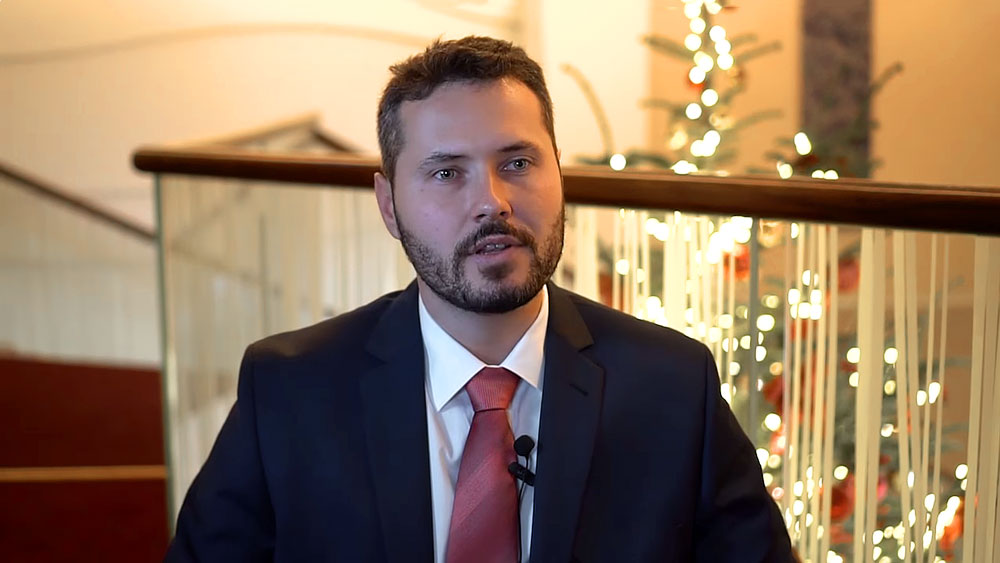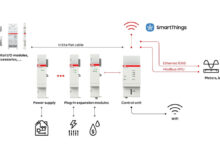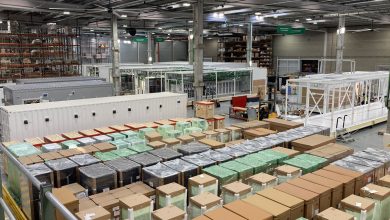How blockchain technology works in the energy sector
Q&A with Armand Doru Domuta
Armand Doru Domuta is the CEO of Restart Energy and President of the Romanian Blockchain Association (RBA) - an organization centred around raising awareness of the benefits of blockchain systems and promoting blockchain technologies in Romania and abroad, through various events and presentations. With over 10 years of experience in the European energy market and a deep knowledge of renewable energy solutions, Armand has developed over 500 renewable energy projects — from greenfield to operation — consistently taking Restart Energy to new heights, with exponential growth in deregulated EU environments and acquisition of new customers at an unprecedented rate. He explains clearly how blockchain technology works in the energy sector.
You have recently been elected President of the Romanian Blockchain Association. What are the mission and goals of your association?
The Romanian Blockchain Association is a non-profit organization that has been founded for educating the society and for the promotion of blockchain technology in the public and private sectors of Romania. Our mission is to create value by bringing together the worldwide blockchain community’s best practices for adoption by the Romanian society.
Our vision is to help position Romania at the forefront of blockchain technology, by fostering a blockchain technology hub within the country.
We are the Romanian advocates for blockchain technology and our role is to promote blockchain friendly regulation in Romania.
While Blockchain has been around since 2009, last year marked a turning point in global recognition for its potential applications. How are things going in Europe and in Romania?
Blockchain is doing very well in Europe; even going so far as to have the full backing of the European Commission. The majority of countries within the EU have already signed the European Blockchain Partnership – a pan-European initiative that aims to promote the technology cross-border, as well as internally. Romania has recently joined the signing member states – therefore showing our national commitment to IT and blockchain in particular. It is the RBA’s aim to educate the public at large on the potential of this positive and disruptive technology.
Please explain to us how blockchain technology works in the energy sector.
In the energy sector, blockchain is especially noteworthy for its ability to cut administration costs, especially when it comes to the involvement of third parties, as well as improve prediction efficiency when coupled with specialized hardware such as smart-meters.
Furthermore, a more efficient and localized energy economy can be fostered by integrating blockchain based smart contracts with IOT and prosumers; coalescing into a local smart energy grid that has the long-term potential of reducing – or even eliminating – dependence on fossil fuels, as well as increasing the independence of said local grid from outside energy sources.
According to a recent report from GTM Research, the first blockchain in energy transaction took place in April 2016 in Brooklyn, New York. Today, there are 122 organizations involved in blockchain technology and 40 deployed projects. Between Q2 2017 and Q1 2018, over USD 300 million was invested in the blockchain in the energy industry worldwide. How would you describe the status of this business in Europe and Romania?
In one word – prospering. There is more government involvement, there is more European involvement, and the public at large is seeing the benefits of blockchain more and more – helped by organizations such as ours.
There have been some companies that have attempted to merge energy and blockchain already. Some have successfully done so, within certain niche roles; however, most have had a narrow focus and haven’t offered the disruption that the technology itself could potentially provide. This was one of the founding principles of the Restart Energy Democracy project – the grand idea of democratizing the energy sector and bringing consumers and producers closer together than ever before, using peer-to-peer blockchain technology.
How could energy companies using blockchain technology make existing processes more efficient?
The answer is two-fold.
On the macro scale, interfacing smart meters with blockchain-based smart contracts leads to better prediction of energy consumption patterns and therefore a more efficient system overall; reducing dependence on the spot market.
Secondly, smart grids – blockchain-powered local grids that link prosumers in the same area – can increase energy-efficiency by replacing traditional large-scale power plants within their local area, thereby vastly reducing the energy loss that occurs over traditional long-distance energy transmissions, as well as the rather significant costs associated with the long-distance transmission network itself and its maintenance.
How is the regulation impacting the take-up of blockchain in Romania? Are we expecting new legislation in this regard?
As a member of the European Union, especially one that recently signed onto the European Blockchain Partnership, Romania has shown its commitment to implementing and growing blockchain within its borders. Due to the strong national IT sector, one can accurately surmise that this will lead to a natural adoption of blockchain within the country. The Romanian Blockchain Association aims to help speed this process along.
In terms of the energy industry, Romania has recently adopted into law a proposition from January this year, that effectively enables prosumers to exist within Romanian law. Anyone that produces under 100kW is now legally able to inject and sell this energy into the grid, without requiring further paperwork. This is quite different from the situation only a couple of months back, when prosumers had to register as producers with all the paperwork that entailed. This effectively enables local blockchain-powered smart-grids to exist within the country, as well as bolstering renewable energy production – with all the benefits that entails.
What are the effects of the new technologies – especially blockchain – on reducing energy poverty?
Full-scale power plants are an expensive endeavour, especially for low-population, disenfranchised areas. Such plants require specialized equipment and personnel to maintain, as well as a constant supply of specific fuel. These can be hard to come by in isolated areas.
Smart-contract-powered blockchain technology, coupled with smart grid technology, can much more easily be adapted to such conditions, at a lower cost, as well as not needing the aforementioned specialized long-term workforce.
Should governments see this potential and properly invest in it with the right programs, energy poverty can be greatly reduced, around the world. This approach also has the benefit of being a green, zero-carbon approach to the problem – benefiting everyone in the long run.







